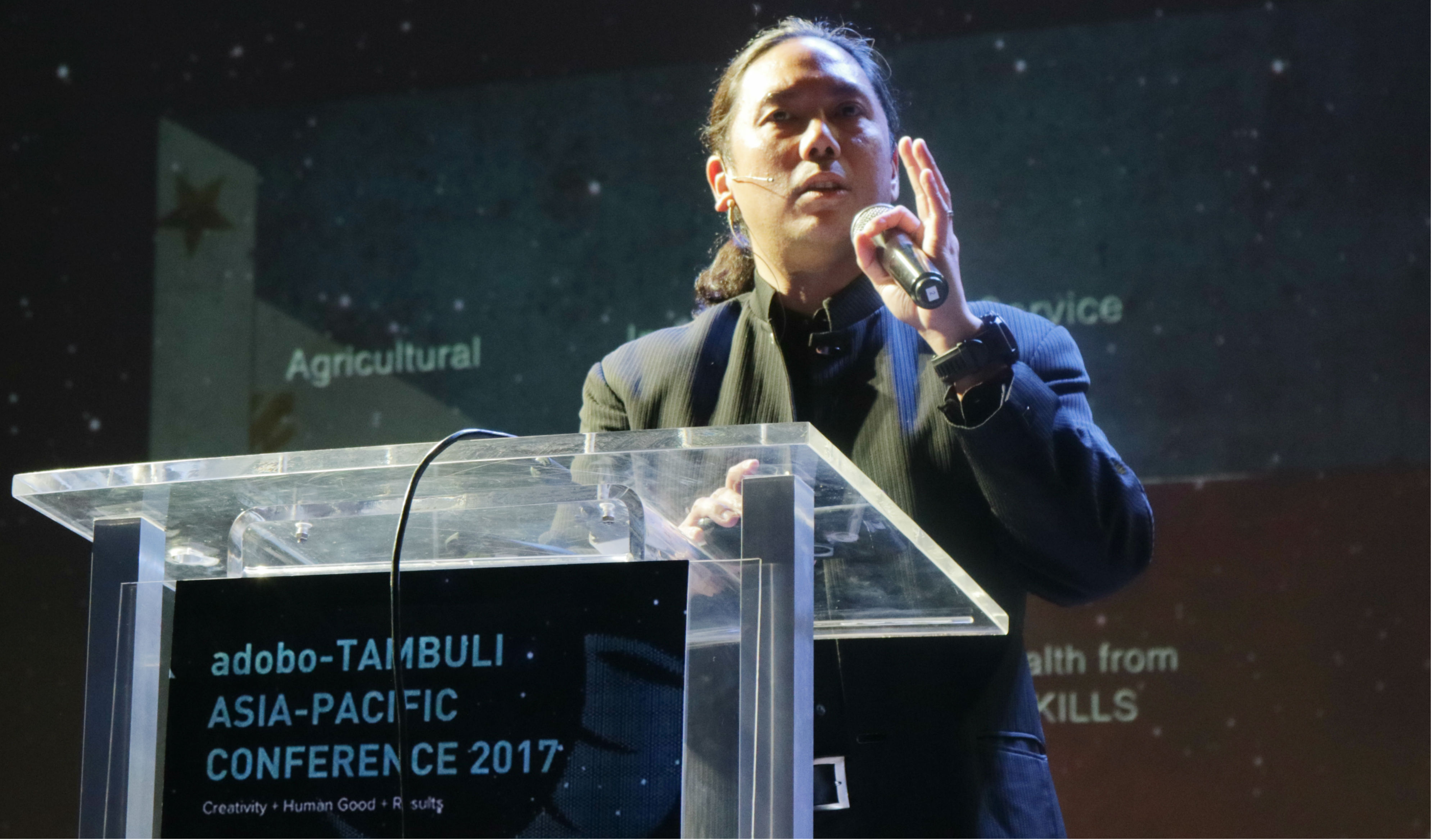MAKATI CITY – Since the late 1900s, the concept of the creative economy has gained widespread recognition and growth in countries such as the United Kingdom, South Korea, Japan, and Singapore. Yet, this is a relatively young concept in the Philippines. Paolo Mercado, Nestlé Philippines Senior Vice President for Marketing, Communication & Innovation and founding member of the Creative Development Council of the Philippines, talked about the creative economy and how creativity can drive inclusive economic growth during the adobo Tambuli Asia-Pacific Conference last June 6, 2017.
How can the creative economy become the next growth driver of the Philippines? First, there is a need to define what a “creative economy” is. Mercado shared that in the year 2000, Prof. John Howkins from the UK observed a big economic shift driven by creativity and ideas. According to Howkins, the creative economy is the only economy based on people and the ideas they create. “It is about the power of a creative person to take a creative idea or skill and hone it to a degree that attracts a market,” added Mercado.
He then cited two popular individuals in the entertainment industry as examples of people who used their creativity and skills to become pioneers in their field. These are stuntman and actor Jackie Chan and Cirque de Soleil founder Guy Laliberté. According to Mercado, aside from being the best in what they do, these men created platforms and venues to teach and even create jobs for other people who have the same creative passion. Chan wanted to professionalize and scale the career of stuntmen, while Laliberté drove Cirque de Soleil to a level of excellence no other circus troupe has been able to achieve.
At the global level, Mercado relayed, the UN Conference on Trade and Development has done a comprehensive creative economy industry mapping, while the UN Development Program has identified creative industries not just for advanced countries but emerging countries as well. In 2015, Ernst & Young released a pioneer study mapping out creative industries across the globe. Results revealed that the biggest creative economy in the world is found in the Asia-Pacific region, with USD 740B in revenue and 12B people in employment.
The top-ranking fields contributing to the creative economy are (1) television, (2) visual arts, (3) print media, and (4) advertising. Yet, Mercado emphasized, television ranked first because of advertising. This is why, he said, marketing is essential in the creative economy. “We fuel the creativity of these sectors,” Mercado stated.
In Asia, South Korea is one of the pioneers in and one of the biggest creative economies. After the Asian depression, the country made the strategic decision to develop and support creativity and innovation especially in the technology and entertainment industries. Japan followed suit with its Cool Japan strategy which put their country’s food, culture, and entertainment on the global stage. Even China has been making moves to go from “made in China” to “designed in China”.
In the Southeast Asian region, the top economies, Indonesia, Singapore, Malaysia, and Thailand with the exception of the Philippines, have a creative economy policy. Singapore has launched its Design Singapore initiative as early as 2002. Malaysia has put its creative industries as top economic priority. Thailand made such a bold move to put their creativity and design on the world stage that the leading design school in Italy, the Academia Italiana, opened a campus in Bangkok. From having just the Ministry of Tourism and Creative Economy, Indonesia has established the Creative Economy Agency.
The ASEAN Creative Cities Forum and Exhibition held in Manila last April 24-27, 2017 emphasized art and culture as driving forces for sustainable development throughout the region. Several cities in the Southeast Asia and East Asia regions have been already recognized by the UN Educational, Scientific and Cultural Organization as creative cities. The Philippines has yet to make an entry in the list.
Mercado presented the factors put forth by urban studies expert Richard Florida which the creative class needs to stay and work in a city or urban centre. First, talent should be recognized and valued by all sectors in the place. These cities should have the necessary technology to allow creatives to scale their ideas. Lastly, groups in these cities should have tolerance for people of all races, ethnicities, origins, and genders.
To further emphasise the importance of supporting the Philippines’ creative industries, Mercado quoted former Department of Tourism Secretary Ramon Jimenez, Jr. saying, “the Filipino will always be part of a creative economy. But if he leaves the Philippines then his talent goes to the creative economy of another country.” Mercado added, “our ability to nurture the creative economy of the Philippines will spell the competitiveness of the Philippines in this area.”
Mercado pressed further, saying that the Philippines needs to transition from having an economy based on service to one driven by creativity. The Philippine economy is currently largely made up of revenues from BPOs and OFWs particularly domestic helpers, nurses, and seamen. However, these sectors are under pressure with issues in the political environments of destination countries, stricter immigration rules, decreasing oil prices affecting the economies of oil-producing countries in the Middle East. Technology companies such as IBM Watson are developing even more intelligent technologies such as cognitive intelligence services which have algorithms designed to produce responses as good as BPO employees. “We need to go from outsource to creators,” Mercado stressed.
This is why Mercado as well as other stalwarts in the creative and technology industries in the Philippines have joined forces to establish the Creative Development Council of the Philippines in coordination with the Department of Trade and Industry (DTI) and Centre for International Trade Expositions and Missions (CITEM). The organization aims to help government and industries to create policies to grow the country’s creative economy. By 2030, the Creative Development Council wants the Philippines to rank in the top five creative economies of the world in terms of economic value, job creation, and talent attractiveness.
Mercado admitted that there is still a long road road to take to grow the creative economy of the Philippines, but ended with a call to action saying, “creative industries, as you think of your own mission, values, and purpose, think of job creation and think of how you will create value for Filipino creativity in a global market.”








